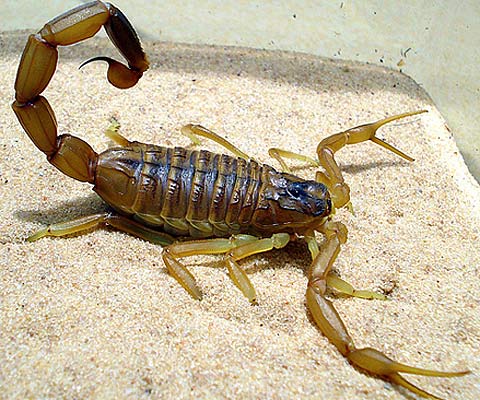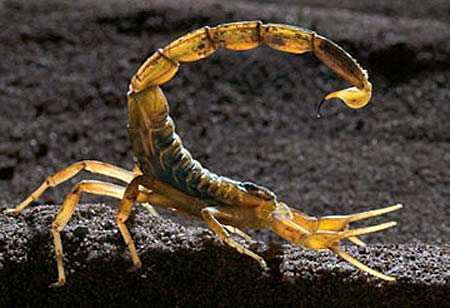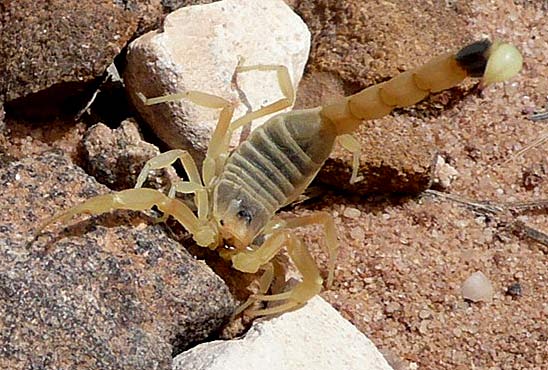Deathstalker – Yellow, Poison Stinger in the Desert

Deathstalkers (yes, that’s really their name) are known also by their Latin binomial name Leiurus quinquestriatus; sometimes known colloquially as the Palestine yellow scorpion, the Omdurman scorpion, and Israeli desert scorpion. These names have mostly arisen from trade of the arachnid in local communities. The binomial name translates to “five-striped smooth-tail”. Fact: these yellow arachnids are the most venomous scorpions in the world. You can imagine why they are called “deathstalkers”.

These poisonous creatures measure up to 3 inches long (77 mm) and inhabit the deserts of North African and Middle Eastern countries including Iran, Afghanistan, Pakistan and Yemen. The deathstalker’s venom includes a powerful mix of neurotoxins which invokes a most terribly painful sting in its victims. Many animals in their range would be killed almost instantaneously by the mighty sting of the yellow deathstalker. Humans, on the other hand will normally survive a sting from one of these scorpions, especially adults in good health. Children, sickly people and the elderly are, however, at risk for death when stung by a deathstalker. This is one of several good reason not to go walking barefoot in the sand of such places (if the idea might have occurred to you). It is important when stung by one of these creatures to undergo medical care. You would have trouble spotting the scorpion in the sand colored landscape unless you got up close. The best policy is of course to remain far away from the poisonous sting. The animals are known to be nervous and aggressive when they have been held in captivity so it is probably better for all parties to not keep them captive.

Much like snake venom, the terrible venom of the deathstalker has been found to be scientifically useful in medical applications. So far researchers have found uses including the treatment of brain tumors and regulation of insulin which could be used to aid people suffering from diabetes.

